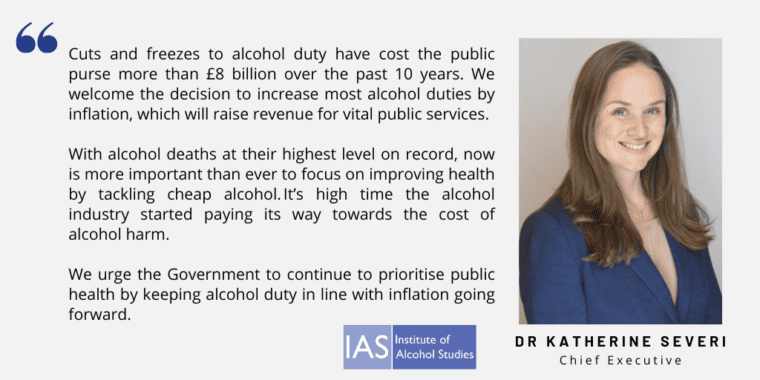The alcohol duty reform, which sees duty based on the strength of products, starts today and coincides with an increase in duty rates.
There will be a temporary 18-month easement period in which all wines of strength 11.5-14.5% will use an assumed strength of 12.5%.
We support the shift to a more proportionate system, however, we have a number of concerns and recommendations:
- The rates are set too low – they should at least cover the £27 billion cost of alcohol harm to society
- Cider is still being preferentially treated with lower rates than the same strength beer, which is likely to continue to cause harm. They should be equalised
- Duty should be de-politicised and automatically uprated in line with inflation or earnings yearly, instead of being considered at each Budget
Also from today, it is understood that duty will be uprated by 10.1%, making it only the
second time in the past 12 years that most alcohol duties have been uprated in line with
inflation.
IAS’s chief executive, Dr Katherine Severi, welcomed the increase and said it is high time the alcohol industry pays towards the harm it causes:

However, even after the increase, alcohol duty will still be much lower than it was in 2012/13. In real terms:
- Beer duty will be 29% lower
- Draught beer duty will be 36% lower
- Cider and spirits duty will be 23% lower
- Draught cider duty will be 30% lower
- Wine duty will be 15% lower
For more on this topic, check out our Spring Budget analysis.
